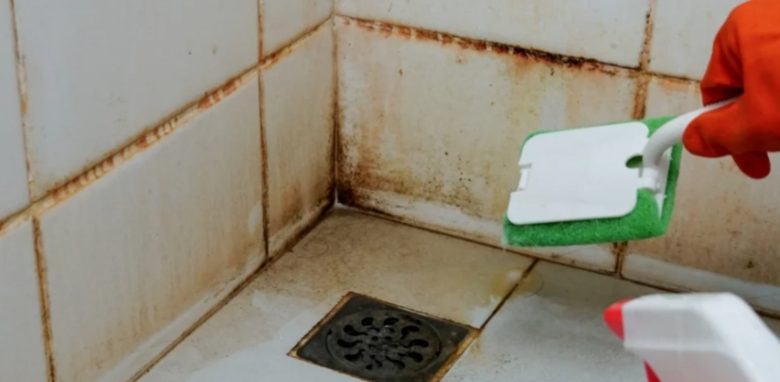Understanding the Health Risks of Bathroom Mould and How to Avoid Them

Table of Contents
Introduction:
The bathroom, a space of relaxation and hygiene, can sometimes hide a silent intruder – mould. Beyond its unsightly appearance and the potential damage it can cause to your home, bathroom mould poses health risks that should not be ignored. In this blog post, we delve into the health implications of mould and explore effective ways to prevent its growth.
Identifying Bathroom Mould
Common Areas of Growth
Before addressing the health risks, it’s essential to identify the common areas where mould tends to flourish. These include damp surfaces such as shower curtains, grout lines, tiles, and even the ceiling. Paying attention to these areas can help in early detection and prevention.
Recognizing Visible and Hidden Mould
Bathroom mould can manifest in visible patches, often appearing as black, green, or brown spots. However, mould can also grow in hidden areas, such as behind walls or under flooring. Musty odours in the bathroom may indicate hidden mould growth that requires immediate attention.
Health Risks for Vulnerable Populations
Immunocompromised Individuals
Individuals with compromised immune systems, whether due to medical conditions or treatments, face elevated risks from mould exposure. For this demographic, mould-related health issues can escalate quickly, making prevention and prompt remediation essential.
Elderly and Children
They are often more susceptible to the health risks associated with mould. Their immune systems may be less robust, and respiratory issues can have more severe consequences. It is crucial to create a mould-free environment, especially in homes with young children or elderly individuals.
Preventing Bathroom Mould
Ventilation: Keeping the Air Flowing
Proper ventilation is a key factor in mould prevention. Ensure your bathroom is adequately ventilated by using exhaust fans or opening windows during and after bathing. This helps to reduce humidity levels, creating an environment less conducive to mould growth.
Regular Cleaning: A Simple Yet Effective Strategy
Regular cleaning is paramount in the battle against mould. Focus on areas prone to moisture, such as shower curtains, tiles, and grout. Using mould-resistant cleaning products and implementing a consistent cleaning routine can help keep mould at bay.
Use of Mould-Resistant Materials: A Proactive Approach
When renovating or designing bathrooms, consider using mould-resistant materials. These materials are designed to deter mould growth, providing an added layer of protection against the development of these unwanted fungi.
Humidity Control: Monitoring and Maintaining Ideal Levels
Keeping humidity levels in check is crucial for mould prevention. Consider using dehumidifiers in bathrooms with poor ventilation or consistently high humidity levels. Monitoring and maintaining ideal humidity levels can significantly reduce the risk of mould growth.
Addressing Leaks Promptly: A Stitch in Time
Leaks, whether from plumbing fixtures or a compromised bathroom seal, should be promptly addressed. Regularly inspect the bathroom for any signs of water intrusion, including discoloured patches on walls or ceilings, as these can indicate hidden leaks that may contribute to mould growth.
Sealing Grout and Caulking Gaps
Grout lines and gaps in caulking are common areas where moisture can accumulate, leading to mould growth. Regularly inspect and repair any damaged grout or caulking. Consider using mould-resistant products when resealing these areas to create a less hospitable environment for mould.
Dealing with Existing Bathroom Mould
Safe Cleaning Practices: Protecting Your Health
If you discover mould in your bathroom, it’s essential to tackle the issue safely. Wear protective gear like a mask and gloves and use mould-killing cleaning solutions. Ensure proper ventilation during the cleaning process to minimise your exposure to mould spores.
When to Seek Professional Help: Complex Mould Issues
In cases of extensive mould growth or persistent issues, seeking professional help may be necessary. Professional mould remediation services can assess the extent of the problem, identify the underlying causes, and provide effective solutions to ensure a thorough and safe removal process.
Seeking Professional Help
Mould Inspection and Remediation
In cases where bathroom mould is persistent or widespread, seeking professional help is advisable. Mould inspection and remediation experts can identify the extent of the problem, address underlying issues contributing to mould growth, and implement effective remediation strategies.
Addressing Structural Issues
Sometimes, mould growth is a symptom of deeper structural issues. Professionals can assess and address issues such as inadequate insulation, poor ventilation, or compromised building materials that contribute to persistent mould problems.
Creating a Mould-Preventive Routine
Regular Inspections
Schedule regular inspections to identify and address potential moisture issues before they escalate. Checking for leaks, inspecting caulking, and ensuring proper ventilation should be part of your routine maintenance.
Educating Household Members
Raise awareness among household members about the importance of mould prevention. Encourage habits such as using exhaust fans, keeping surfaces dry, and promptly reporting any water leaks or damage.
Conclusion:
Understanding the health risks associated with bathroom mould empowers homeowners to take proactive measures to prevent its growth. By adopting a combination of preventative strategies, regular cleaning practices, and addressing issues promptly, you can create a healthier bathroom environment for you and your family. Remember, a mould-free bathroom not only enhances aesthetic appeal but also contributes to the overall well-being of your home.




